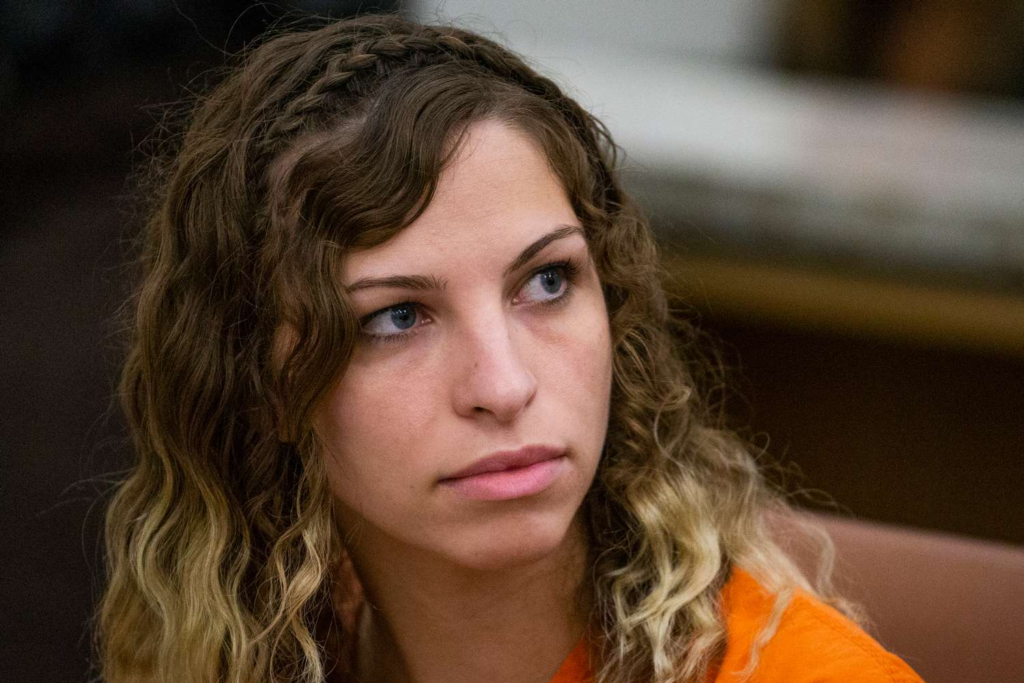Brittany Zamora, once a promising middle school teacher, became infamous for her shocking criminal actions that shattered trust and left a community reeling. Her case, which involved inappropriate relationships with her students, serves as a cautionary tale about the responsibilities of educators and the devastating consequences of breaching them. This article delves into Zamora’s life, the events leading to her arrest, and the broader implications of her actions.
Early Life and Career
Born on June 27, 1988, in Goodyear, Arizona, Brittany Zamora pursued a career in education with the goal of making a positive impact on young minds. She earned her teaching credentials and began working at Las Brisas Academy, where she was known for her engaging teaching style and ability to connect with students. Zamora’s reputation as a dedicated educator made her actions all the more shocking when they came to light.
The Allegations and Arrest

In March 2018, Brittany Zamora was arrested on charges of sexual misconduct with a minor. The allegations centered around her inappropriate relationship with a 13-year-old male student. According to police reports, Zamora engaged in sexual activities with the student multiple times, including in her classroom and car. In one instance, an 11-year-old boy acted as a “lookout” while the misconduct occurred.
The relationship began when Zamora encouraged her students to message her on an instructional app called Classcraft. Texts between Zamora and the student quickly turned flirtatious and escalated into a sexual relationship. The boy’s mother discovered the messages and reported them to authorities, leading to Zamora’s arrest.
Legal Proceedings
Brittany Zamora faced 15 felony charges, including sexual conduct with a minor, attempted molestation, and public sexual indecency. In June 2019, she pleaded guilty as part of a plea deal, receiving a 20-year prison sentence—the minimum possible for the charges. She is expected to be released in 2038 and will be on probation for the rest of her life, as well as required to register as a sex offender.
During the trial, Zamora’s attorney highlighted a psycho-sexual evaluation that determined she had no sexual interest in children but suffered from anxiety and depression. The judge considered her lack of criminal history and the evaluation in determining her sentence.
The Impact on the Community

The revelations about Brittany Zamora’s actions sent shockwaves through the Goodyear community and the education sector at large. Parents, students, and colleagues struggled to reconcile the image of a trusted teacher with the reality of her crimes. The case highlighted the vulnerability of students and the critical need for vigilance in schools.
The emotional toll on the victims and their families was profound. The psychological harm caused by Zamora’s actions underscored the importance of safeguarding children and addressing power imbalances in educational settings.
Broader Implications
Brittany Zamora’s case raises important questions about morality, authority, and the responsibilities of educators. It serves as a reminder of the trust placed in teachers and the devastating consequences of breaching that trust. The case also highlights the need for robust systems to prevent and address misconduct in schools.
Educational institutions must prioritize the safety and well-being of students, implementing measures such as background checks, training on professional boundaries, and mechanisms for reporting concerns. Zamora’s actions underscore the importance of creating environments where students feel safe and supported.
Reflections and Lessons Learned

The story of Brittany Zamora is not just one of scandal but also a cautionary tale about the potential for exploitation in educational environments. It emphasizes the need for vigilance, accountability, and a commitment to ethical behavior. Educators must recognize the power dynamics inherent in their roles and strive to uphold the highest standards of conduct.
For the community, the case serves as a call to action to ensure that schools are safe spaces for learning and growth. Parents, administrators, and policymakers must work together to create systems that protect students and foster trust.
Conclusion: A Legacy of Betrayal
Brittany Zamora’s actions have left a lasting impact on her victims, the community, and the education sector. Her case serves as a stark reminder of the responsibilities entrusted to educators and the devastating consequences of failing to uphold them. As she serves her sentence, the lessons from her story continue to resonate, shaping conversations about trust, ethics, and the safeguarding of children.
Also Read: Philip Pilmar’s Fight for Truth After a Shocking Crime






